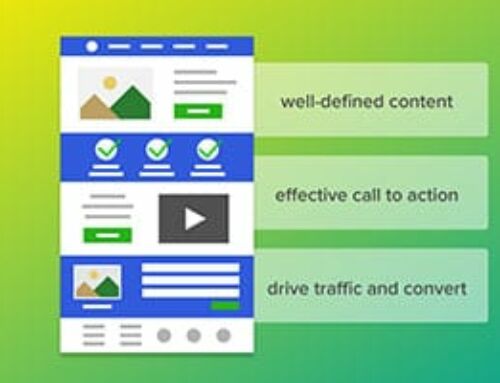
Redesigning a website can be more complicated than building a new site from scratch. When you redesign, you have to consider the content that is still live, what works and what doesn’t, and making sure you save the fragments in case you need to add it to the new redesigned site.
Why Are You Redesigning?
Redesigning a website should not be a decision you come to one Tuesday morning while strolling through Starbucks on your way to grab your mobile order before dashing off to work on time. Careful consideration of why you want to redesign your site is important:
- Is it performing poorly?
- Is your user experience less than perfect?
- Is your website responsive?
- Is your content outdated?
- Are you receiving conversions from your website?
These, among others, are valid reasons to consider redesigning your site. Let’s break down these reasons and learn more about why a redesign would be beneficial for your company.
Poor Performance
Every website should have a goal, such as: increasing sales, building a brand reputation, informing clients about your business, etc. If you are not reaching these goals, it may be time to redesign.
How do you know how well your website is performing? Some people will say just to check your Google Analytics and compare your month-over-month traffic to see if your traffic has improved. Others will say to check sales from your e-commerce store. It needs to be more than that! You need to consider all of the metrics: sales related, such as the number of purchases made, marketing related such as the number of click-throughs to your website, and also conversions which relate to the number of forms or leads you receive from your information online.
If your traffic is steady and your bounce rate is low, but people aren’t converting to your product, it may be time to go back to the drawing board.
Time for a Rebrand
Branding is like giving your company a face or something to be recognized by consumers. Branding is the most powerful marketing tool and includes everything from your logo to the website to your customer service model and even the uniforms you choose for your employees (Think Target: Red shirts and khakis). When you no longer offer a unique face or begin to change the direction of your company, it may be time to rebrand your company.
When a company chooses to rebrand, it is often a multi-faceted change. Everything is up for examination including the website. Rebranding helps to build consumer trust, attracts target customers, and potentially improves website performance. You could just decide to update your existing website with your company’s new logos, etc., but we recommend a complete redesign. You’re giving your company a completely new face, why only give your website a bit of Botox?
Your Website Hasn’t Withstood the Test of Time
People grow tired of looking at the same thing over and over again. Websites aren’t an exception. A stale or old website fails to encourage repeat customers simply because there’s no reason to visit a website with no new information. Stale websites happen for a few reasons:
- Outdated Content: If you’re not writing evergreen content for your website, it will be necessary to update outdated content regularly to prevent them from becoming stale. If you haven’t updated your website since the exciting event you hosted a year ago, it may be time to consider a new approach.
- Non-responsiveness: It is 2019. People expect websites to function well on mobile devices and when they don’t, they tend to leave that site and find one that works better for them. If your site is non-responsive, meaning the images and text do not adjust to fit various sized screens, then you probably have a stale website.
- Outdated technology: Are you still running a flash intro on your website? Or have unnecessary pop-ups right when clients/customers land on your page? Consider updating. Google doesn’t like these techniques and quite frankly…neither do your visitors.
The internet is constantly improving and websites are growing stale at a rapid pace. Make sure you are updating your website regularly even after a redesign because new content keeps the website fresh. You know how dogs are said to age by 7 years to 1 human year? You can say the same about websites: 1 human year is about 6 months in website time. You want to make sure that you’re updating at least once every 6 months for the highest rate of success.
So What Now?
Now that you have decided that redesigning your site is the right move, let’s look into the best way to execute your new goals.
Step One: You should always start with data. Take what’s working from the old website so you can move it to the new one. It’s likely that you have already identified specific problems with your existing site (and if you’ve made it this far in the blog, we’re sure you probably have a list).
Use tools like Google Analytics and Lucky Orange to get an idea of numbers as well as heatmaps/recordings of how people utilize your website and what information they find to be most informative.
If you’re a small business who has never worked with an agency before, you may either feel overwhelmed by the data you have available for your website or you may not have set up anything on your site at all. In either case, you can still reach out to an agency for assistance. The agency won’t be able to pull old data from your site if it was never set up, but should be able to help you set it up for future use or help you understand what you have.
Step Two: Identify your priorities. Depending what your goals are, your website may not need a complete overhaul. Instead of changing the overall look of your site, you may just need to enhance the ways in which it functions, especially when it comes to sales and conversions.
Your priorities may include things like:
- Reformatting content
- Adding a new inventory system for your e-commerce store to the back office
- Adding tracking codes to monitor traffic sources and conversions
Step Three: Define your target audience and know what search engines look for (like Google!). Your audience may evolve over time. With new technology releasing onto the market constantly, it is important to keep your website up-to-date. Google’s updates and expectations change frequently as well which require you to stay in-the-know and make appropriate changes to your website to appease them. you need to expand into new markets by updating your message for the people must willing and able to buy from you.
Step Four: Create a list of desired changes. This step is a wish list of things you want to add to your site. Consider anything from color changes to new tools for your visitors to use. Make note of any structural changes you would like to make to your site (removing dates from blog post URLs is a good example). Do you want to restructure your navigation bar or create a new layout for your landing pages? This is where you should brainstorm and note all of your ideas.
Step Five: Time to map out the details and flow of your website. Do you want a more complex navigation bar at the top of your site? Maybe you noticed that users were having trouble finding the content they need so you want to improve the way to locate information or the way the information is presented. Each of your desired items should have a purpose—make sure the things on your list are aimed to complete a goal set for your redesign before adding minor changes like changing the header color from orange to purple. Changes with a purpose will offer more mileage on your site than minor aesthetic changes.
Step Six: Start building the website redesign plan with your team. Plan your timeline. This is when steps 1-5 will pay off the most. Your website designer will thank you for the preparation and you’ll appreciate knowing what to expect.
It is important to know your vision before diving into a website redesign. Sometimes all of the strategic planning can be overwhelmed and time-consuming, Though, keep in mind that if you’re hiring an agency, going with a DIY developer, or doing it in-house, make sure you appoint someone to approve all changes systematically. Hiring a professional website designer is a smart move to make for your business. Check out why in our blog “Top 7 Reasons You Should Hire a Professional Website Designer.”




